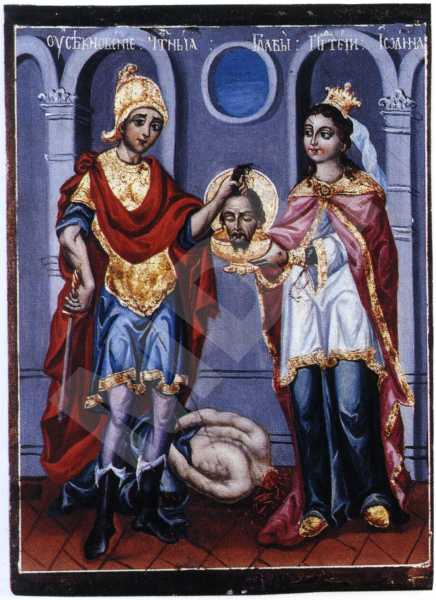The Beheading of Saint John the Baptist
Type:
Icon
Period:
The beginning of the
19 century
Toma Vishanov-Molera, born around 1750, painter of icons and murals, founder of the Bansko school of art. He grew up in the family of the clergyman Vishan. Around 1765 he went to Vienna, where he studied painting. It is not known who were his teachers there or when he returned to Bansko. His fellow villagers called him the Moler, Molera(from German Maler ‘painter’), whence the entire family's surname. Under the influence of the European 18th century art Toma Vishanov painted his works in a new manner, unknown until then in Orthodox art. The figures are realistic, vivid, expressive. Toma Vishanov is an innovator in the early period of Bulgarian Renaissance. His ideas on art were not understood and at first were rejected by his contemporaries. His work has not been studied extensively. He died after 1811 in Bansko.
Dimmensions (cm):
29
/ 22.5
/ 2
Location
Country: Bulgaria
Province: Blagoevgrad
Town: Bansko
Church: St. Trinity
Source
Country: Bulgaria
Province: Blagoevgrad
Town: Bansko
Church: St. Trinity
Description
A specific compositional treatment of the theme. On the right-hand side is Salome, the daughter of Herodias, dressed in rich garments and with a crown on her head. She is holding a platter with the cut-off head of Saint John the Baptist. On the left-hand side is the figure of a soldier in full armour and with a helmet on his head, who is holding in his left hand a sword and with his right one is laying down the cut-off head in the platter. Between the two figures is the beheaded inclined figure of Saint John the Baptist. The scene is set against the background of a richly decorated interior. The graphic line-up and the colouring, as well as the vivid expressions of the figures, suggest the hand of the founder of the Bansko school of art.
Iconographical technique: Combined
With velaturas. Used has been the "wet into wet" method in the carnations. The varnish cover is applied thinly and evenly. The gilding is on the crown of Herod's daughter, on the armour of the soldier, on the aureole and on the decorative edges of the garments.
Base material: Wood
The icon's base is a one-piece softwood panel with two inserted beams. The ground coat is of plaster, laid thinly and evenly.
State, restoration traces and comments
There are no traces of any previous restorative intervention. There are damages along the enclosing frame, as also a number of mechanical damages on the painting layer.


